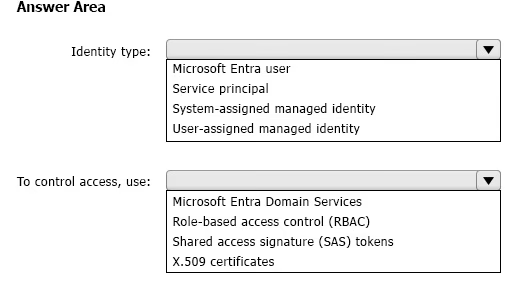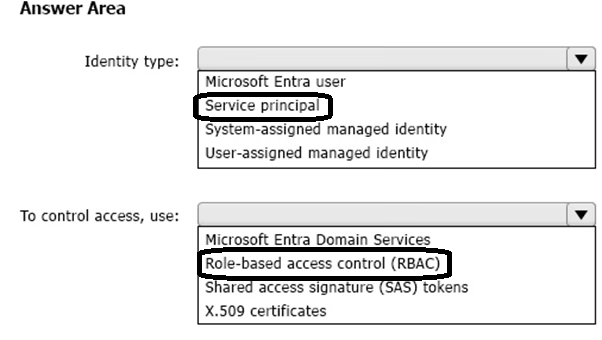HOTSPOT
-
You have a Microsoft Entra tenant that contains multiple storage accounts.
You plan to deploy multiple Azure App Service apps that will require access to the storage accounts.
You need to recommend an identity solution to provide the apps with access to the storage accounts. The solution must minimize administrative effort.
Which type of identity should you recommend, and what should you recommend using to control access to the storage accounts? To answer, select the appropriate options in the answer area.

